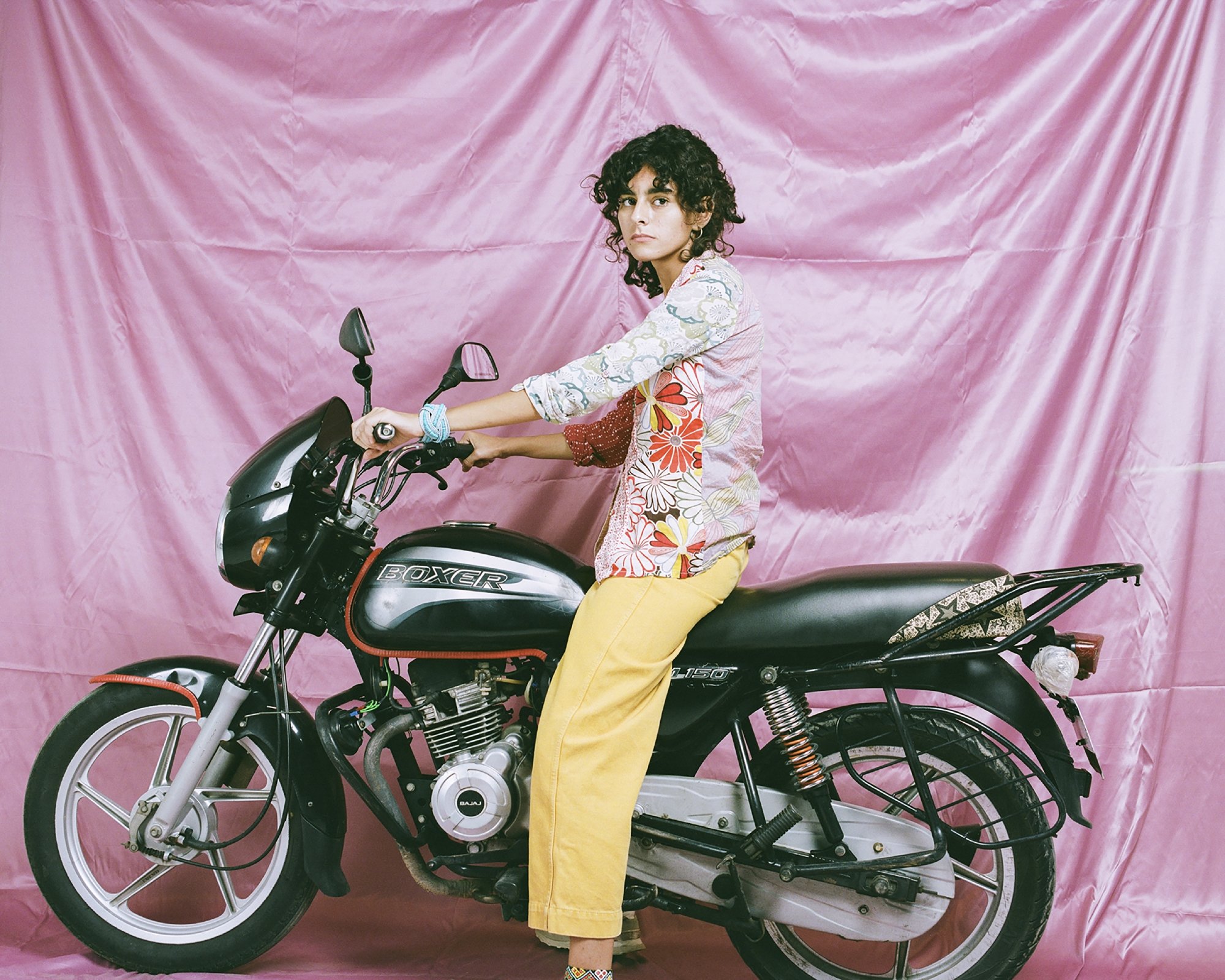The Egyptian photographer discusses womanhood, hair and self-censorship
“Why is it that my entire femininity and womanhood is reduced to how I wear my hair?” asks Najla Said. We meet with this young Egyptian photographic artist at 1-54 London to discuss her female-focussed photography. And in front of us, dominating the room given over to Mashrabia Gallery of Contemporary Art, is Said’s tongue-in-cheek piece There Was No Answer from her series, Sister, Oh Sister. It depicts a woman in prayer covered from head to toe by a veil of blonde weaves, almost as though she's wearing the chador. The work is gently mocking the importance placed upon women’s hair in the MENA region.
“It did originally come from a humorous place,” Said explains. “But when my friend put the hair costume on, she couldn’t move. It was the physical embodiment of how heavily hair - and its connotations - weighs on you. It’s the idea that hair is used as a tool to make women conform to societal norms and the roles that we’re given.” The artist’s own tresses are cropped short in a pixie cut, which still carries certain assumptions: “Your femininity or sexuality is reduced to hair. If you have long hair, you're seductive, if you're wearing a ponytail, you're modest and if it’s too short, then you're probably a guy. It’s like we’re being held hostage by our hair.”
It was body hair that caused an accidental stir in her short series The Yasmina Series, a collaboration her friend Yasmina Hefliger exploring belly dancing without any of the stereotypes usually associated with the artform. Eschewing the colonialist view of Arab women as exotic creatures who exist purely for men, and the Egyptian narrative that sees dancing as synonymous with sex work, it sought to reconcile a woman’s body as being her own. Here, the woman is belly dancing for herself. “There was the most intense backlash to her armpit hair, it was insane. People were commenting that she has too much testosterone and should go to the doctor. Someone said that they could smell the photo,” Said recalls. “It made me think, this is so fucked up. You hope you’ve outgrown trying to cater your body to someone else’s standards but then it comes and slaps you.”
She continues to explore the impossibility of escaping the male gaze in other images from the Sister, Oh Sister series, which investigates a number of first-person accounts of the experiences of womanhood in Cairo as a way to upend patriarchal norms and harness the power of self-representation. In And They Crashed The Party, we see another dancing woman, this time with candles upon her head, who turns around to confront the camera. “The idea was to have her dance without an audience so she could reclaim that space and her body. But she turns around and realises that she’s being watched. It’s a metaphor for how what society can always intrude, even when you’re alone.”
“But the more I talk about my work, the more I realise that it’s about sisterhood”
Born in Egypt, it was her years after high school spent in Boston and then Paris before returning to Cairo, that helped her view home – both the good and the bad – differently, so she used her work to process her feelings and observations. For example, she noticed the way families would travel together on a motorbike. Although it’s impossible to know what their relationships were like at home, in those moments, on those bikes, there was a tenderness. The resulting image of four young women together on one vehicle, Never Too Many, has been highlighted by Vogue Italia, Elephant Magazine and Azeema. “This way of travelling together doesn’t necessarily happen all over the world and the way they’re holding each other is really intimate,” she recalls. “So, I had the idea of girls on a motorcycle. I didn’t know what it meant to me then, I just felt a duty to create it. But the more I talk about it, the more I realise that it’s about sisterhood.”
Currently based in Berlin, she can laugh at some of the idiosyncratic things about Egypt’s culture but it’s very much still home, so her work naturally involves thinking cleverly about how to make her point in a way that’s both soft and safe. “I have to self-censor my images before I even produce them, in a way that doesn't take away from the concept but serves it,” she reflects. Nevertheless, her work never stops seeking to reconcile the many aspects that can co-exist within her culture. “My work is for Egyptian women and people within the region who have similar upbringings. There are aspects of our culture that can feel restrictive but I don’t want to separate from it. I want to mend it, somehow. I want to change things up a bit and flip them around so that they make sense to me.”
This is what the image Pray For Me 666 Times reflects on. What we see is the limited, rear view of a teenage couple, presumably kissing, her bejewelled hands around his head. “I grew up religious and used to pray. What really tortured me was that I felt that I couldn’t be religious and feminine, or religious and sexual. It was either/or because the duality was never reflected in my surroundings,” she says. “So, I wanted to show we can be whoever we want to be, and that things that are seemingly conflicting, can coexist, without giving away too much about the person's gender or sexuality. The prayer counter being set to 666 is a very childish way of mocking the absurdity of it all.”
Words Miriam Bouteba
Visit Najla Said
Visit Mashrabia Gallery of Contemporary Art
Published on 19/12/2021




